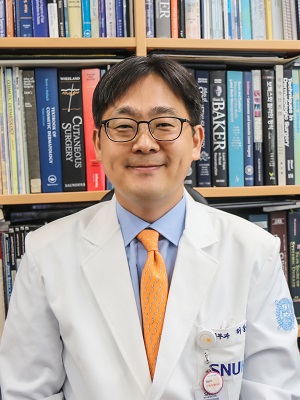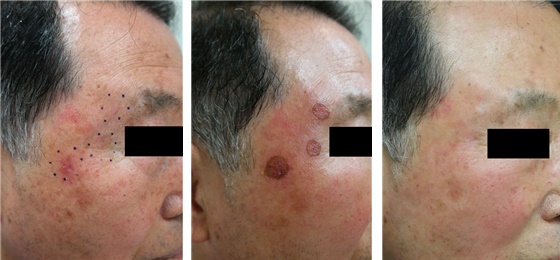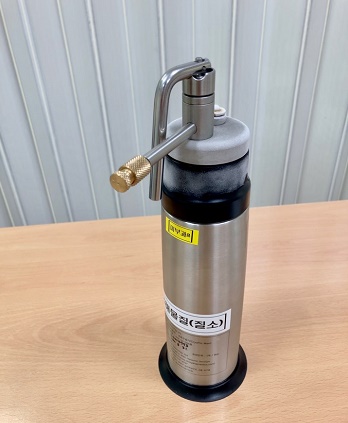
This winter’s weather was so volatile. I have introduced how to generate heat in the skin and use it to treat skin diseases so far, but today I will talk about the opposite.
Skin damage is not only caused by the heat but also by the cold. Since ancient times, many efforts have been made to treat human disease with cold injury, but the beginning of modern cryotherapy(therapy using freeze) was started by Campbell White, a dermatologist in New York City in 1899. In 1966, Michael Bryne of the U.S. invented a spray device for cryotherapy, and it became a standardized treatment for various skin diseases.
Human tissues are partially destroyed below -25 degrees Celsius, and completely destroyed when they fall below -50 degrees Celsius. Skin damage caused by cold occurs due to ice formation inside of tissues, cellular damages, and vasoconstriction due to low temperatures, but the degree of sensitivity differs according to the cell types. Water, fat, melanocytes, nerve tissues, and vascular endothelial cells are more sensitive, and keratinocytes covers the skin, cartilage cells, and fibroblasts are relatively well tolerated.

Cryotherapy is simple and inexpensive, can treat symptoms of many diseases together, does not require anesthesia, and its preparation procedure for treatment is relatively simple easy. The determination of appropriate refrigerant, cooling time, cryotherapy technique, and the extent of surrounding damaged areas are required for the proper treatment.

In the past, liquified air, liquified oxygen, and dry ice (solid form of carbon dioxide) were used as refrigerants, but now liquid nitrogen is mainly used. In order to damage the keratinocytes on the skin surface, the contact surface should be cooled rapidly to - 20 to - 30 degrees Celsius. The lower the refrigerant’s temperature itself, it is the better for rapid cooling. Nitrogen, which accounts for 78% of the air, is preferred because it is easily available, harmless, inflammable, and has a very low boiling point of minus 196 degrees Celsius. Recently, an electrical cooling device using “the Peltier effect” was also introduced.
Regarding the cryotherapy techniques, the direct contact with soaked cotton swabs or metals in liquid nitrogen were used in the past, but cryospray devices are more frequently used nowadays. Cryospray devices are advantageous to prevent infection because it does not contact skin directly and a cryoprobe with hollow needle filled with refrigerant can be attached. There are various skin diseases can be treated by cryotherapy, such as wart, aging spot, keloid, hemangioma, nevus flammeus, actinic keratosis, Bowen's disease, and skin cancer.


